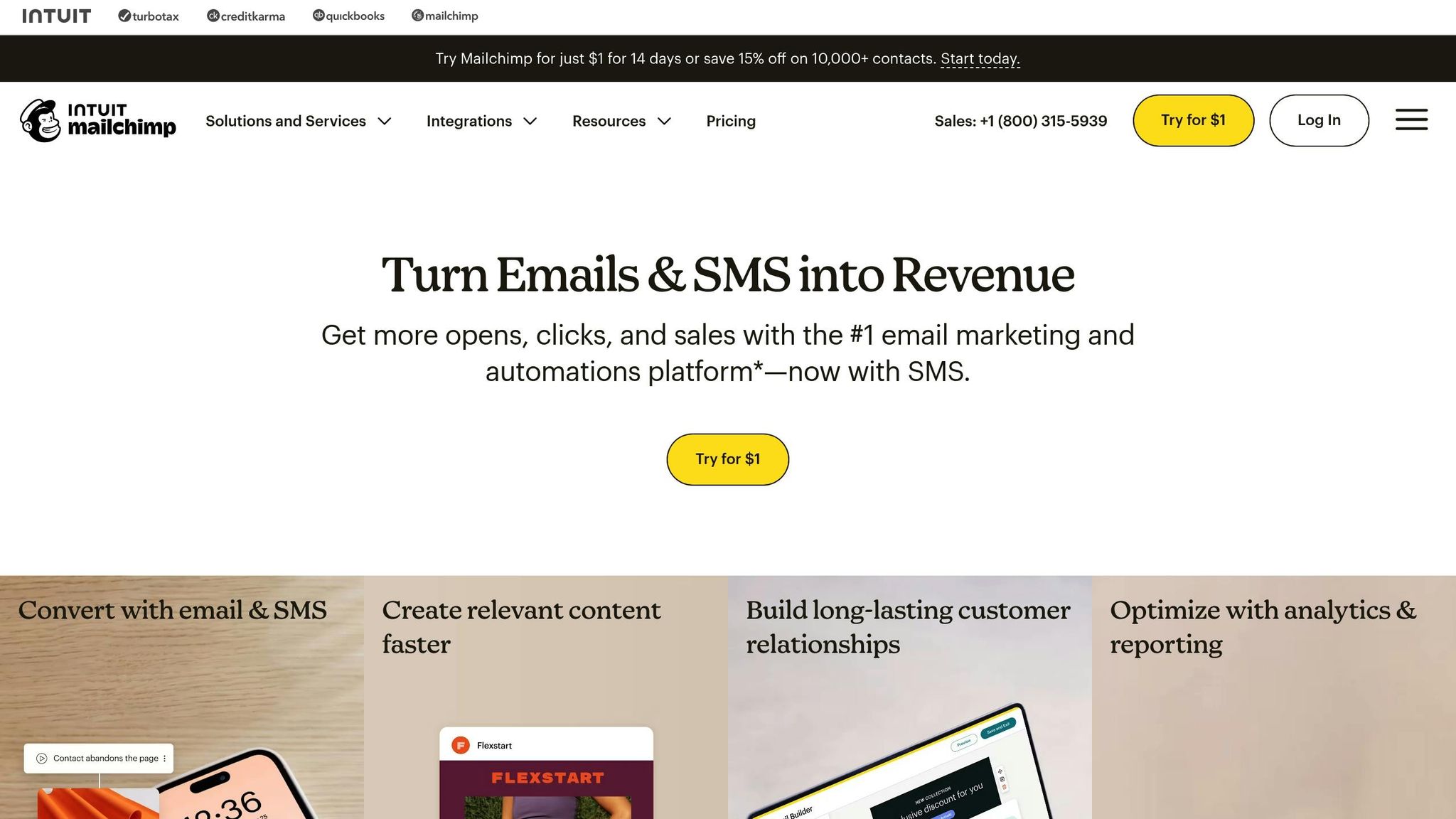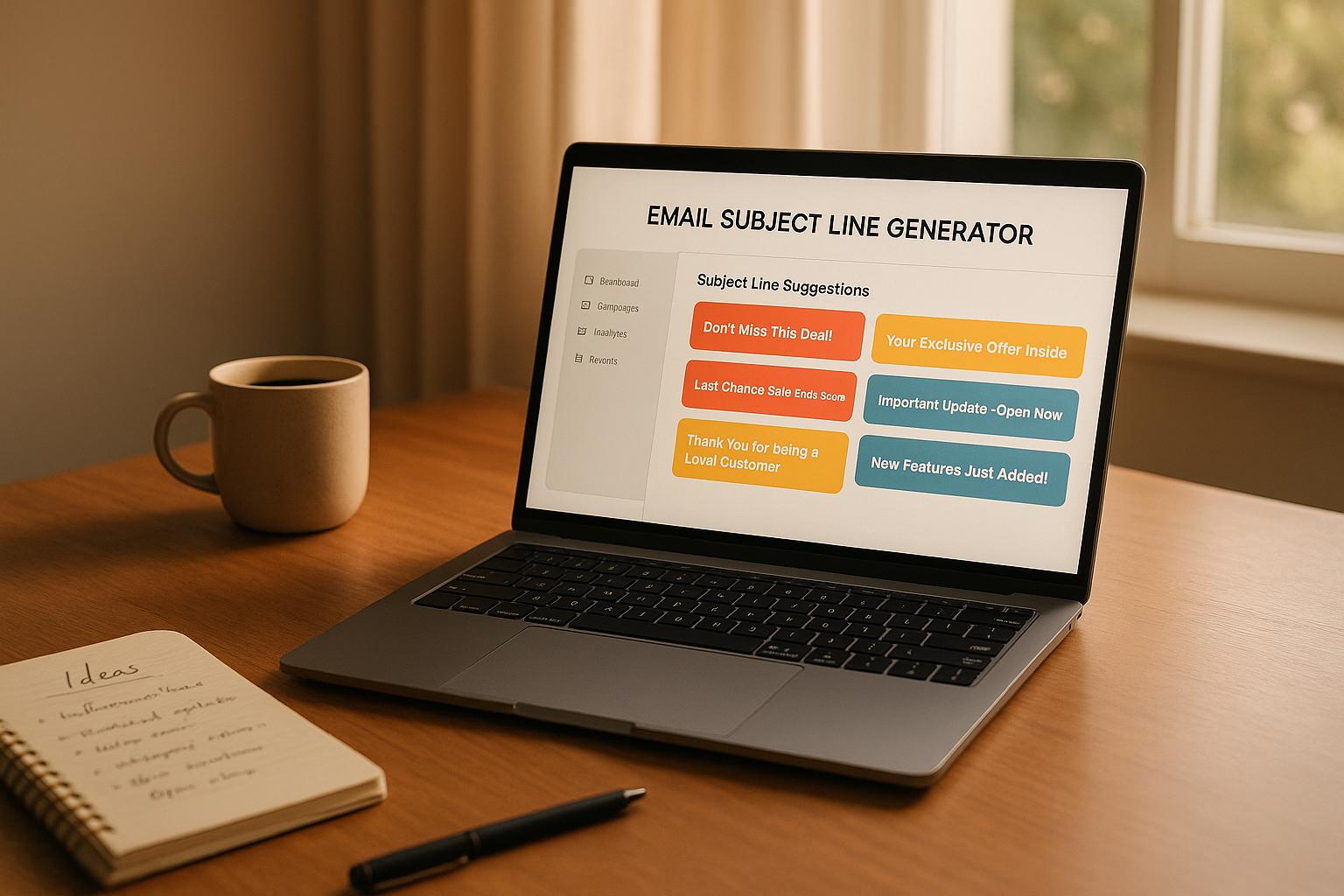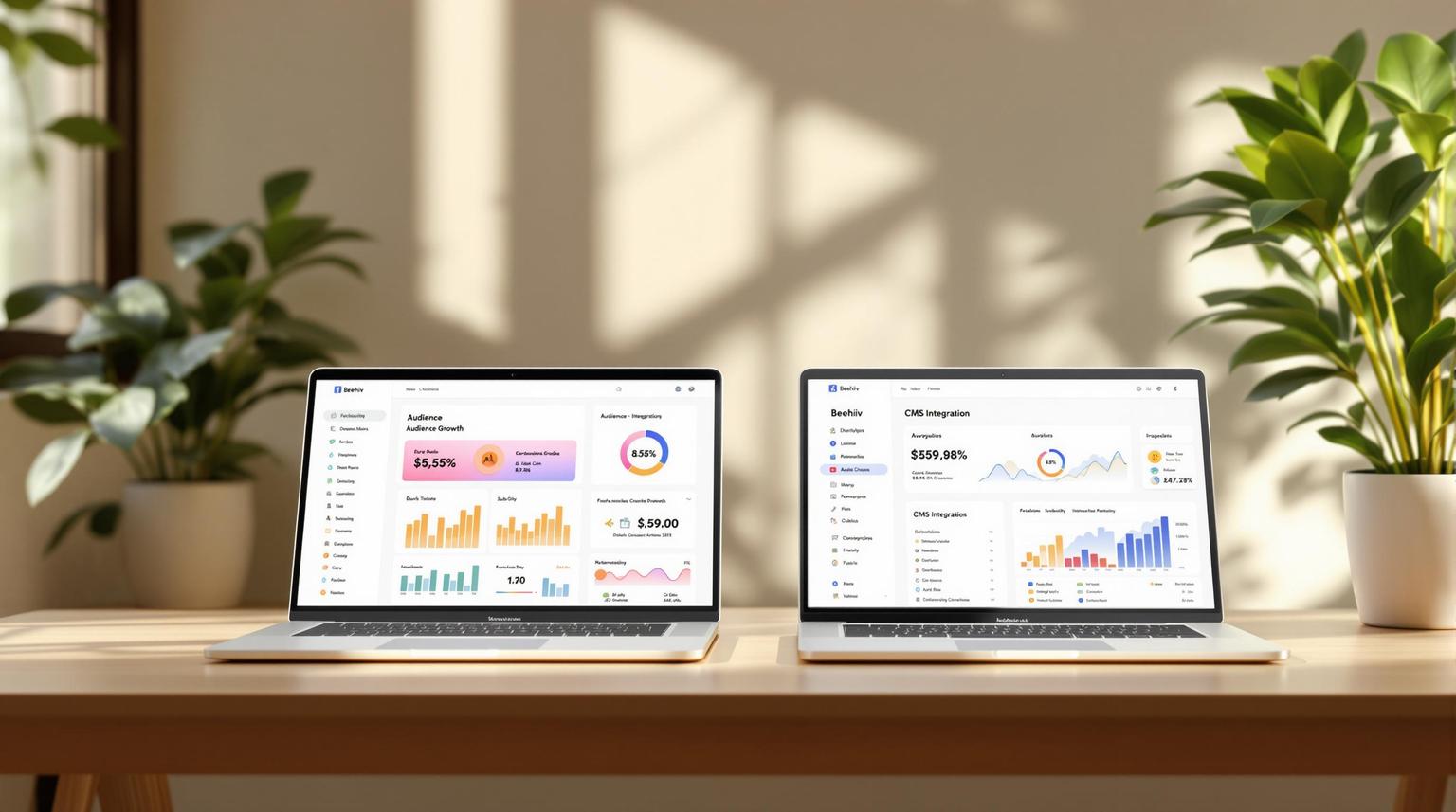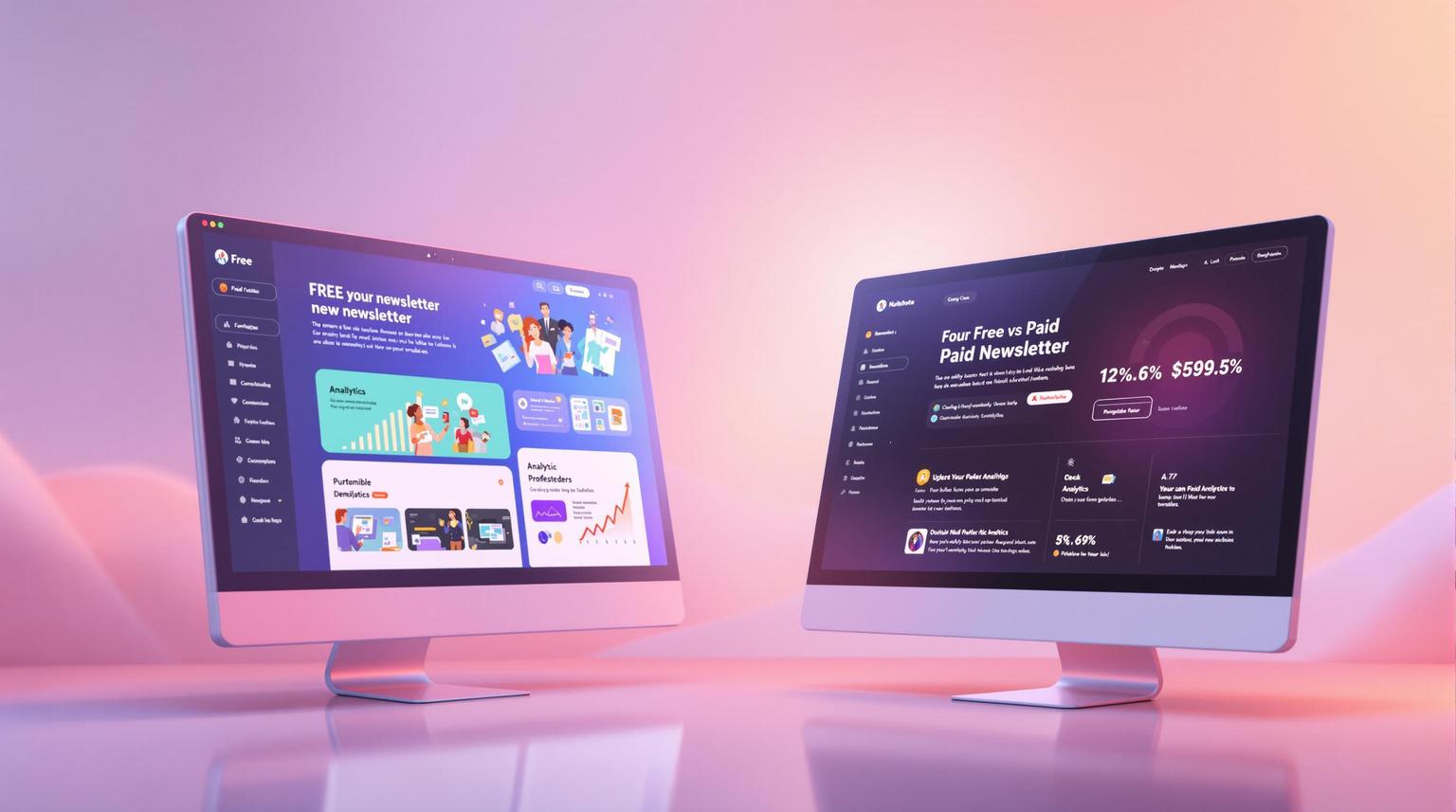When choosing a newsletter platform, community features can make or break your success. They help creators connect with peers, solve problems faster, and build stronger relationships with their audience. Platforms offering discussion forums, resource libraries, and live events provide creators with tools to overcome challenges like writer’s block, technical issues, and audience engagement struggles.
Key takeaways:
- Discussion forums: Quick peer-to-peer support and shared knowledge.
- Resource libraries: Templates and tools created and refined by users.
- Live events: Real-time learning and networking opportunities.
A lack of community tools can leave creators isolated, while platforms like Substack and Beehiiv stand out for their interactive features. These tools aren’t just extras - they’re essential for growing and maintaining a successful newsletter.
| Platform | Discussion Forums | Resource Libraries | Live Events | Engagement Features |
|---|---|---|---|---|
| Substack | Yes | No | No | Comments, likes, messaging |
| Beehiiv | Limited | Blog-style content | No | Comments, social sharing |
| Mailchimp | No | No | No | Email responses only |
| AWeber | Minimal | No | No | Email-based interactions |
| Flodesk | No | No | No | Email replies only |
Platforms with strong community features help creators stay consistent, solve problems faster, and ultimately grow their audience. Choose wisely to ensure long-term success.
Why I Switched My Newsletter From Mailchimp To Beehiiv and How Beehiiv Transformed My Growth

Common Problems Newsletter Platform Users Face
Creating a successful newsletter is no small feat, even with the enticing prospect of a $42 return on every $1 spent. Roadblocks often derail even the most determined creators. These challenges highlight why having strong community tools is no longer optional - it’s essential for navigating the daily struggles of newsletter creation.
Getting Started Problems and Learning Difficulties
For new creators, launching a newsletter can feel like staring up at a mountain without a map. The technical setup is just the tip of the iceberg. One of the biggest hurdles? Defining a clear purpose and audience. Many users struggle to pinpoint exactly who they’re writing for and why, which leaves even well-crafted content falling flat.
Then there’s the actual content creation. Writing catchy subject lines, structuring emails for readability, and crafting engaging content doesn’t come naturally to everyone. Add to that the stress of tackling technical issues like deliverability, data analysis, and compliance, and it’s no wonder many feel paralyzed before they even begin.
But the challenges don’t stop there. Building an audience from scratch is an uphill battle. Learning the ins and outs of a platform while simultaneously promoting a newsletter across multiple channels creates an overwhelming learning curve. It’s a lot to handle, and for many, the pressure to master everything at once becomes too much.
Arvid Kahl, creator of The Bootstrapped Founder, sums up the emotional side of these struggles:
"The challenging part is overcoming imposter syndrome. 'Who am I to talk about this' is a constant companion on my journey."
These early roadblocks often set the tone for the more complex challenges ahead, like content strategy and audience engagement.
Missing Ideas and Best Practices
Coming up with fresh ideas consistently is a universal struggle for creators. As Wes Pearce, a newsletter content strategist, explains:
"Most newsletter writers I talk to struggle with the same problem: coming up with fresh ideas consistently. They sit down to write, stare at the blank page, and draw a complete blank."
"Turns out, they weren't more creative. They just had systems."
The key to overcoming this isn’t inspiration - it’s structure. Many creators lack the systems and strategies that make idea generation a repeatable process. This gap extends to a broader lack of strategic understanding. For instance, 51.2% of small businesses don’t have clear marketing strategies, which often translates into newsletters that feel unfocused and fail to connect with readers.
Time and resources add another layer of difficulty. Consistently producing high-quality content requires a significant investment of both, and many creators find themselves stretched too thin. The pressure to stick to a publishing schedule can lead to rushed content that doesn’t meet subscribers’ expectations.
Strategic planning is another common weak spot. Without guidance, creators often struggle to use audience feedback effectively or to craft newsletters around cohesive themes that resonate with readers. This lack of direction results in scattered content that struggles to build a loyal following.
Slow Problem Solving
When technical or strategic problems arise, the speed of resolution can make or break a creator’s momentum. Technical issues like fraudulent signups, deliverability problems, or high bounce rates can disrupt communication and even lead to account suspensions if not addressed quickly. Unfortunately, traditional support channels often take hours - or even days - to respond, leaving creators stuck and frustrated.
These delays don’t just waste time; they can derail entire campaigns. Creators end up spending valuable hours in back-and-forth communication instead of focusing on content or audience engagement. For those working on tight deadlines or time-sensitive projects, this inefficiency can be especially damaging.
Andrew Petcash from Profluence Sports highlights how unresolved issues can disrupt consistency:
"The most challenging part is staying consistent."
Consistency is crucial for building trust with subscribers. When creators can’t resolve problems quickly, their publishing schedules suffer, which can erode trust and hurt long-term growth.
The competitive nature of today’s market makes these delays even more costly. John Bardos, creator of Creator Boom, captures the reality of the current landscape:
"Growth is hard. There are so many newsletters and information sources now that it's a streetfight for attention. It's very hard to stand out."
In such a crowded space, any delay in solving problems or making improvements can mean losing ground to competitors who have faster support and better tools. Quick resolutions and optimized performance aren’t just nice to have - they’re critical for staying ahead. This is where community-driven support becomes invaluable, offering creators the immediate help they need to keep pushing forward.
How Community Features Fix User Problems
For newsletter creators, traditional support systems often fall short, leaving them stuck with delays or struggling to overcome creative challenges alone. Community features, however, offer a game-changing solution by creating a network of peers ready to share advice, resources, and success stories. Let’s explore how these features provide faster help, access to shared resources, and inspiration from collective wisdom.
Faster Help Through User Support
Traditional customer service tends to be slow and reactive, often leaving users waiting for answers when they need them most. Community features flip this model by enabling peer-to-peer assistance, where experienced users step in to share solutions based on their own experiences. Instead of waiting 24–48 hours for a ticket response, creators can post their questions in community forums and receive multiple answers within hours. This not only speeds up the process but also ensures users get actionable advice when official support is unavailable.
What sets community support apart is its personalized touch. Unlike generic troubleshooting guides, peers share workarounds and creative solutions they’ve tested themselves. These real-world insights often prove more helpful than standard documentation, making the support both timely and tailored. Plus, by reducing reliance on dedicated support teams, this approach helps cut down on customer service costs.
Access to Shared Resources and Templates
Beyond quick problem-solving, communities simplify content creation - a task that can be time-consuming for newsletter creators. Instead of starting from scratch, users can access a wealth of shared resources, like templates and guides, that have already been tested in successful campaigns. These resources often include email design tutorials, HTML templates, and practical tips for improving newsletter aesthetics and functionality.
What’s even better? These shared resources are constantly refined. Community members provide feedback, share updates, and improve templates over time, turning a simple library into a dynamic, evolving toolkit. This collaborative effort lifts the burden of resource creation off individual users, offering a foundation that anyone can build on and adapt to their needs.
Ideas from Success Stories and Best Practices
Finding fresh content ideas and effective strategies is a constant challenge for newsletter creators. Communities tackle this by offering a space to share success stories and best practices, creating a treasure trove of knowledge that helps others avoid mistakes and replicate proven strategies.
Take Christian Bryant, for example. While managing a newsletter for software engineers, he launched a Slack group to answer subscriber questions. What started as a small initiative grew into a collaborative hub where members exchanged insights and worked on projects together. This community not only gave Bryant new content ideas and validated topics that resonated with his audience but also opened doors to monetization through paid workshops. His success stemmed from the trust and connections built within the group.
"By incorporating their input and giving credit where due, you build trust and show that you genuinely care about delivering valuable content."
- Christian Bryant, beehiiv Blog
Community discussions are also a source of motivation. Sharing struggles and victories creates a supportive environment that keeps creators inspired and consistent. By fostering real-time support, resource sharing, and collaborative success, communities transform the often isolating process of newsletter creation into a shared journey. Each success story adds to a growing pool of knowledge, making the experience not just easier but far more rewarding.
sbb-itb-2653e19
Important Community Features to Look for in Newsletter Platforms
When choosing a newsletter platform, the quality of its community features can shape your entire experience as a creator. The right tools not only help you grow but also connect you with others who share similar goals. Let’s explore the essential community features that can provide meaningful support and make a real difference.
Discussion Forums and Q&A Areas
Discussion forums and Q&A sections are the backbone of a thriving newsletter community. These spaces remove the hassle of traditional customer service methods like phone calls and instead offer a collaborative environment where help is always within reach. You can post a question and receive multiple expert answers - often in just a few hours.
"Posting on a discussion forum is a quick, easy and accessible way of asking questions, getting answers, and retrieving information." - Jon Allen, Verint
The real value of forums lies in their ability to grow into searchable knowledge bases. For example, if someone asks about improving email deliverability or customizing templates, that discussion becomes a permanent resource for others facing similar challenges. This user-generated content often proves more practical than official documentation because it’s rooted in actual experiences.
Well-organized forums make it easy to navigate conversations. Platforms that categorize discussions into clear sections, offer pinned threads for important topics, and include badge systems to recognize helpful contributors create a more structured and engaging experience. A robust search function is also key, allowing users to quickly find the exact information they need.
Forums don’t just provide answers - they foster long-term engagement. As Jon Allen explains:
"As time goes on, these same users will return again and again to self-serve, ask questions, get and give answers, and share their knowledge with others, all while recommending your brand to their friends and co-workers along the way."
This sense of community sets the stage for the resource-sharing and live learning opportunities discussed below.
User-Created Resource Libraries
User-created resource libraries are treasure troves of practical solutions. These collections typically include email templates, HTML snippets, automation workflows, and design elements that community members have developed and shared.
What makes these libraries so powerful is their collaborative evolution. A resource might start as a basic template, but as other users tweak and refine it - perhaps by optimizing it for mobile or improving its design - it becomes even more effective. This collective effort ensures the library stays relevant and useful.
These resources often respond to trends faster than official channels. Whether it’s adapting to new email design styles or complying with updated regulations, community members tend to share solutions more quickly than platform updates can roll out.
For creators, these libraries save time and effort. Instead of starting from scratch or hiring professional designers, you can rely on resources that others have already tested and proven to work.
Live Events and Webinars
Live events and webinars bring a dynamic element to community learning. They transform text-based interactions into real-time, actionable lessons. Watching a creator demonstrate advanced segmentation techniques or explain their content planning process can make complex ideas much easier to grasp.
What sets live sessions apart is their interactive nature. Features like live polls, Q&A sessions, and breakout rooms turn passive viewers into active participants. This level of engagement not only deepens learning but also fosters connections between community members.
"You want your attendees to come out of the other side of it with a better, deeper, more valuable network and a set of opportunities they didn't have before. That's the most important thing in a virtual event." - Joey Hinson, Senior Director of Operations at TechCrunch
Regular webinars also position platforms as leaders in the newsletter space. By hosting sessions on industry trends, new tools, or success stories, platforms provide ongoing value that keeps members engaged and informed. Recorded sessions become part of a searchable library, allowing users to revisit key topics, catch up on missed events, or reference specific techniques for their own newsletters.
The best platforms use webinars to showcase community feedback, highlight member projects, and offer themed series that address common challenges. When done well, these events combine education with networking, creating a space where creators can learn and build relationships at the same time.
These three core features - discussion forums, resource libraries, and live events - create a supportive ecosystem for newsletter creators. Platforms that prioritize these elements not only help users solve problems but also inspire collaboration, learning, and growth. If you’re evaluating platforms, look for ones that actively invest in these community-driven tools - they can make the difference between working in isolation and thriving with a network of support.
Comparing Community Features Across Top Newsletter Platforms
Newsletter platforms aren't all created equal. Some focus on fostering interactive communities, while others stick to the basics of email delivery. Knowing these differences is key to picking a platform that matches your goals.
Platform Community Comparison
| Platform | Discussion Forums | Resource Libraries | Live Events | Interactive Engagement | Community Strengths |
|---|---|---|---|---|---|
| Substack | Threads, chat, and "Notes" | – | – | Comments, likes, direct messaging | Social media–like engagement experience |
| Beehiiv | Limited native forums | Blog-style content | – | Comments, social sharing | Strong focus on growing subscriber lists |
| Mailchimp | None | – | – | Email responses only | Designed for promotion, lacks community tools |
| AWeber | Minimal community tools | – | – | Email-based interactions | Traditional approach with limited engagement |
| Flodesk | None | – | – | Email replies only | No community-building capabilities |
Take Substack, for example. Its discussion threads, chat, and "Notes" feature create a dynamic space for interaction. A great example is the Time Foragers Club, which thrives on Substack's ability to encourage active reader engagement.
Beehiiv, on the other hand, takes a different route. It repurposes newsletters into blog posts, allowing subscribers to engage through comments and social sharing. While this approach supports some interaction, its primary goal is to grow subscriber lists rather than foster deeper connections.
Platforms like Mailchimp and Flodesk keep things basic, offering little to no community tools. Their focus is more on promotion than building connections. This limitation led creators like Alisha Ramos to move from Mailchimp to Substack, seeking a more personal way to connect with her audience. Ramos transitioned from her newsletter, Girls' Night In, to her new project, Downtime, to better engage with readers.
These examples show how community features - or the lack of them - can shape a platform’s effectiveness in supporting creators.
How Community Features Affect Platform Choice
Community features go beyond just adding a layer of interaction - they help tackle major challenges for creators. They boost engagement, provide quicker feedback loops, and contribute to long-term success. Research backs this up: companies with online communities see 15% higher customer retention rates year-over-year and enjoy 42% higher profit margins per customer.
Sarah Spencer, founder of SongFancy, emphasizes the value of community in her work:
"I can put something out there, see the response, ask direct questions like: What do you guys need?"
Platforms with strong community tools allow creators to connect deeply with their audience, gather feedback, and test ideas effectively. The numbers speak for themselves: creators using advanced community features have reported ROIs as high as 4,530%, with some implementations reaching an astounding 7,071%.
When choosing a platform, think about your long-term vision. While community features might seem like extras, they often determine whether a newsletter evolves into a sustainable, profitable venture or stays limited to one-way communication. These tools are more than just perks - they’re essential for building lasting creator-audience relationships.
Conclusion: Community Features as a Key Advantage
Summary of Key Points
Community features have redefined newsletter platforms, turning them into hubs for meaningful interaction. Research highlights that 67.4% of consumers feel a stronger connection through a community than via social media, and 76.6% wish their favorite brands offered a community. By integrating tools like discussion forums, resource libraries, and live events, creators can tackle challenges such as steep learning curves, lack of feedback, and feelings of isolation.
Why You Should Focus on Community Features
Community features are a cornerstone of long-term newsletter success. As Anna Buss and Nancy Strauss emphasize:
"Successful online communities don't just happen by themselves. They're the result of a carefully executed strategy, solid design and patient nurturing."
When selecting a newsletter platform, prioritize those that include discussion forums, resource hubs, and interactive tools. These features not only reduce support costs but also enhance brand loyalty by offering centralized self-service options and real-time insights into customer preferences. Newsletters, with their approachable format, make it easier for creators to foster authentic connections without overwhelming their audience.
FAQs
How do community features in newsletter platforms help creators stay inspired and connect with their audience?
Community features in newsletter platforms offer creators powerful tools to tackle challenges like writer's block and low audience engagement. By enabling interaction through comments, discussion threads, and feedback, these features ignite fresh ideas and inspire creators to produce new content.
They also play a key role in creating a sense of connection and belonging among readers. Tools like multimedia sharing and interactive discussions invite subscribers to actively participate, making them feel more involved in the creator's work. This back-and-forth interaction deepens the relationship between creators and their audience, fostering a loyal and engaged community.
What community features should I prioritize in a newsletter platform for long-term success?
To ensure steady growth over time, focus on building community features that encourage interaction and connection. Tools such as discussion forums, comment sections, and member directories can create spaces where subscribers actively engage with one another. Integrating with social media platforms is another great way to broaden your reach and keep your audience involved.
It's also important to include features that help you manage and enhance the community experience. For example, analytics can provide insights into community activity, while moderation tools help maintain a welcoming and constructive atmosphere. Lastly, offering customization options allows you to tailor the community space to reflect your brand's identity, ensuring it resonates with your audience.
Why are community features so important for running a successful newsletter?
Community features are key to creating a thriving newsletter. They encourage engagement, build reader loyalty, and cultivate a sense of connection among subscribers. By promoting two-way communication, these features make readers feel heard and more connected to the content.
An engaged community also helps a newsletter shine by transforming passive readers into active participants. This boosts subscriber retention and often leads to natural growth, as loyal readers are more inclined to share and recommend your newsletter to others.


